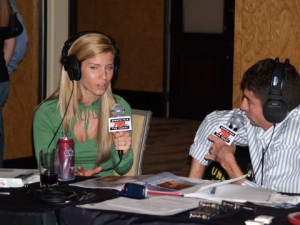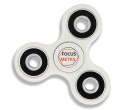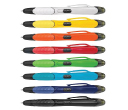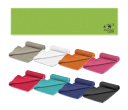Wednesday, December 19th, 2012
6 Things They Don’t Tell You About TV and Radio Interviews
With hundreds of thousands of print and online outlets, it’s almost inevitable that everyone will wind up with a microphone thrust under their chin or red light in their eye for at least a minute or so. Many of us spend considerable time and effort trying to get the media interested, so there’s a certain amount of added pressure when the media asks, “Can you be at the studio by nine?”
Here are 6 tips to get the most from a few, fast minutes on the air.

- Arrive a few minutes early to get comfortable with the surroundings. Most radio and TV stations have a security/sign in drill. Radio interviews typically take place in a cramped booth where one might be elbow to elbow with the host or other guests. TV studios are kept at ridiculously cold temperatures to keep the hosts‘ makeup from running. So it’s advisable to have a jacket along for TV.
- There’s a little red light in both the radio and TV studios. In the radio booth, it means we’re “on the air,” though we might be in commercial. On TV, the little red light is perched over the camera that’s recording the interview. It’s easy to be distracted by the little red light, even though for the most part the person being interviewed should ignore it if they can.
- On TV, if the interviewed person is “remote,” that is they are in New York and the interviewer is in Washington, the interviewed person will be staring straight ahead. But, in a less formal, local “Good Morning” type show, the interviewed person may be having a “conversation” with the host and therefore should be looking at her, not the red light over the camera.
- Clock Management: People who are used to being interviewed have a clock in their heads that keeps track of how many of their “points” they’ve inserted into the interview in how much time has gone by. But, one never really does know exactly how much time one is likely to get. Figure two to three minutes for TV, or eight minutes or more for a talk radio segment.
- Bring along relaxation methods. They always say “be yourself,” but many a newsworthy person has broken into a sweat, even in a studio kept at 60 degrees. Deep breathing, smiling, not doing the thing you do when stressed (drumming fingers, etc.) are advisable.
- Have some way for the audience to follow up. If it’s a product or something like a restaurant, create an offer that will allow you to track how many purchases you receive from the interview. “And for all KOGO listeners who make a reservation before 5 today, we offer a 10 percent discount.” If it’s a more general follow up, provide Website, phone, and social media contacts, and provide those to the station before the interview so they can post them on the screen while the interview is playing.


















